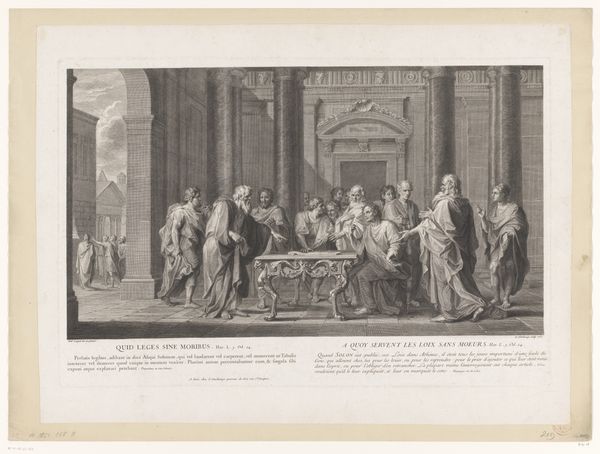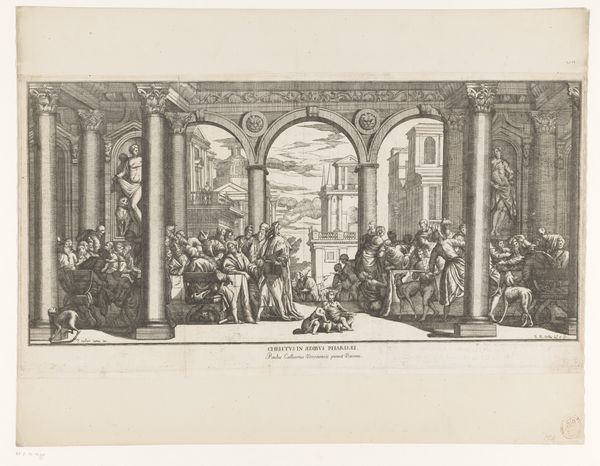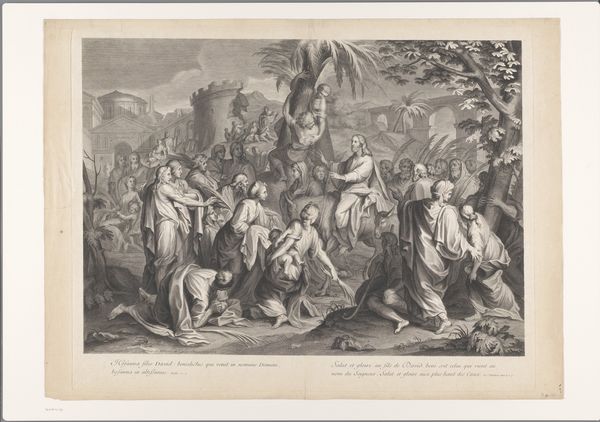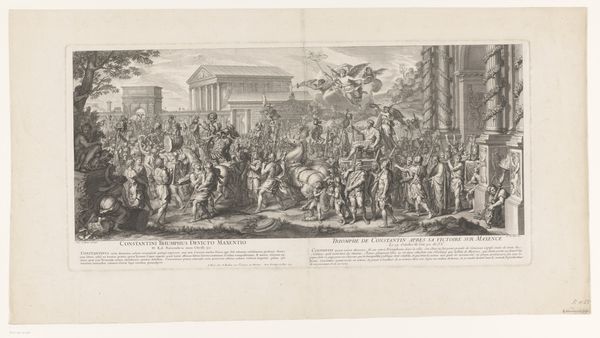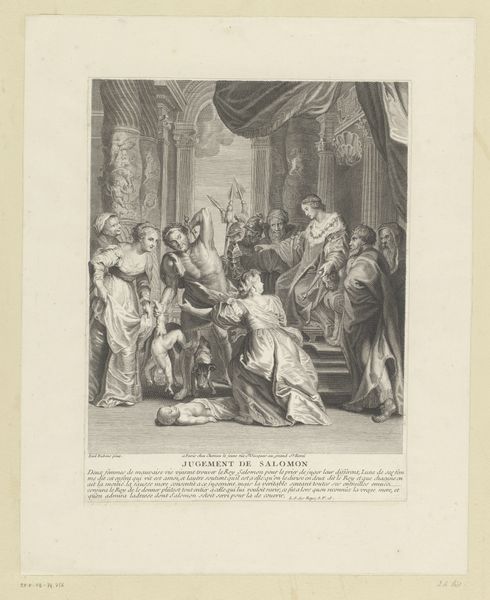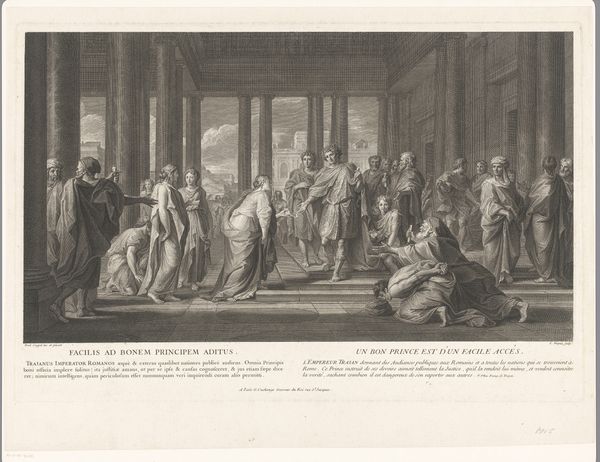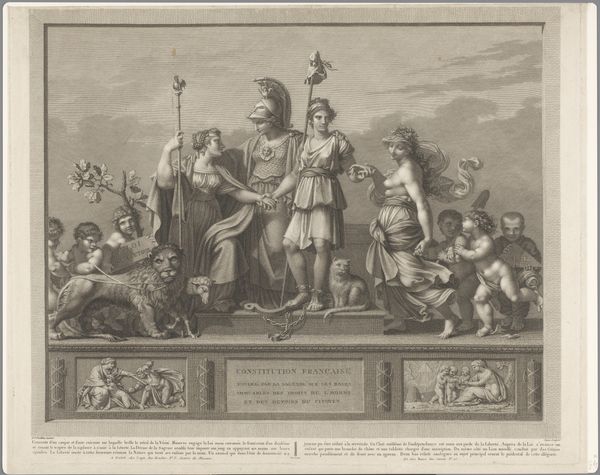
print, etching, engraving
#
baroque
# print
#
etching
#
history-painting
#
engraving
Dimensions: height 360 mm, width 546 mm
Copyright: Rijks Museum: Open Domain
This print depicts Ptolemy Philadelphus granting freedom to the Jews. Note the pyramid in the background; a symbol deeply rooted in ancient Egyptian culture, representing power and eternity. The gesture of Ptolemy, hand outstretched, echoes across time. We see it repeated in Roman art, signaling clemency or dominion, later re-emerging in Christian iconography to symbolize divine grace. It's a visual formula, a *pathosformel* if you will, that speaks to the continuity of human expression. Consider also the posture of supplication in the figures before Ptolemy. This bending of the knee, this raising of hands, it is a primal expression of hope and desperation, repeated throughout history. The collective memory imprints these gestures in our minds, shaping how we perceive power and vulnerability, engaging us on a subconscious level. Like a serpent eating its own tail, these symbols and gestures return. They evolve. They take on new skins, and resurface in different guises, reminding us of the cyclical nature of human experience.
Comments
No comments
Be the first to comment and join the conversation on the ultimate creative platform.
